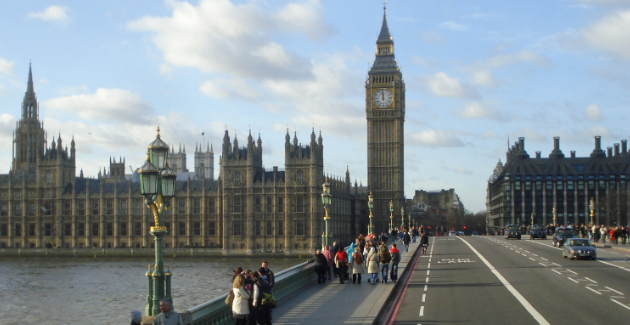The Westminster Terror Attack and the Demise of the Islamic State

Although the UK has long been on high terrorism alert, the Westminster attack’s symbolic location shocked the world. However, the attack itself was unsophisticated, reflecting the evolving threat posed by a diminished Islamic State.
As the world remembered the anniversary of the Belgium attacks, London experienced its deadliest terror attack since the 7/7 bombings in 2005. In what has now been confirmed to be a lone-wolf attack, four people lost their lives as the perpetrator mowed down pedestrians on the Westminster bridge and fatally stabbed an unarmed police officer before being shot dead by police outside the Houses of Parliament. It all happened within 82 seconds.
IS claims responsibility
It didn’t take long until IS claimed responsibility for the attack. The unsophisticated manner in which the attack was carried out indicates that, although the perpetrator may have been inspired by IS, it was not directly orchestrated by IS. In fact, Islamic State’s own propaganda agency framed the attacks as IS-inspired, not IS-directed. The Paris attacks serve as a useful comparison, where logistically planned attacks included coordinated suicide attacks and mass shootings of soft targets with Kalashnikov rifles. Britain has been protected from these kinds of incidents because its strict gun laws make it difficult to smuggle in weaponry.
Nevertheless, the symbolism of the Westminster terror attack location makes the atrocity potent. As noted by David Wells:
“The target and timing of the attack resonated. This was an attack in the heart of London at the home of British politics. With much of the UK media in attendance, news coverage was instantaneous and comprehensive.”
The imagery of people mowed down in one of London’s most iconic places means this attack will be remembered and one of London’s most famous places is now tainted. As terror expert Andrew Silke notes: “Attacking high-profile locations is a hallmark of militant jihadi terrorism, as is the means by which this atrocity was carried out.”
And the threat is not about to disappear. With the demise of the Islamic State in Iraq and Syria, the organisation is changing its modus operandi. Researchers are already seeing a shift in its propaganda, its narrative changing from one focusing on utopia to instead highlighting militancy and warfare, encouraging lone-wolf attacks in the West. This means we will most likely be seeing more of the unsophisticated attacks seen so far in the West. These attacks are the new normal.
Resilience is required
Given the current political climate in the UK, the Westminster terror attack could not have come at a worse point in time. Prime Minister Theresa May has recently found herself confronted on different fronts: foremost, amid a bitter arbitration with the EU about Brexit while trying to negotiate a profitable deal for the UK when it triggers article 50; this in turn has generated internal turmoil, with Scotland now calling for a second referendum on independence; all while the UK attempts to navigate controversies provoked by the Trump administration.
But given the global response of solidarity with London—with perhaps the exception of one Donald Trump, Jr—terrorism has in fact become a uniting factor in these otherwise turbulent times, which are characterised by division and polarisation.
The overall response to the attacks has been commended. While there has been a lot of focus on the UK’s controversial PREVENT arm of the CONTEST counterterrorism strategy, the Westminster attack demonstrates that the other arms, PREPARE and PROTECT, are well-drilled and well-prepared. London has become resilient to these attacks; it endured the IRA bombings, it experienced 7/7. Unwittingly, and despite the constant threat reflected by the terror alert level, Londoners have resisted giving in to terrorism, to living in fear. As someone expressed in light of the Westminster attack: “I think the city braces itself and carries on. There is a viewpoint that effectively, if we let acts like yesterday change us, then the people who perpetrated those have won”.
Constant threat has become the new normal. Australia is no exception. With the demise of Islamic State in the Middle East there are now fears—as illustrated by foreign minister Julie Bishop’s recent comments—that the threat is moving to Australia’s doorstep, with growing concerns returned fighters will look to declare a caliphate in the Southern Philippines. Australia will face a threat from its own returned foreign fighters but also due to plots directed from the nearby region.
In the wake of this constant new threat of unsophisticated terror attacks using low-tech means, the best long-term and reliable weapon for fighting terrorism becomes resilience. Terrorists aim to divide and prompt overreaction. If the recent London terror attacks were to be measured by this benchmark, amid the tangible tragedy, it is heartening to know that the Westminster attacker downright failed.
Anne-Marie Balbi is a PhD candidate at the Department of Social Sciences and Security Studies at Curtin University. Her research explores soft counterterrorism strategies and she teaches in the fields of International Relations and Terrorism studies.
This article is published under a Creative Commons Licence and may be republished with attribution.




